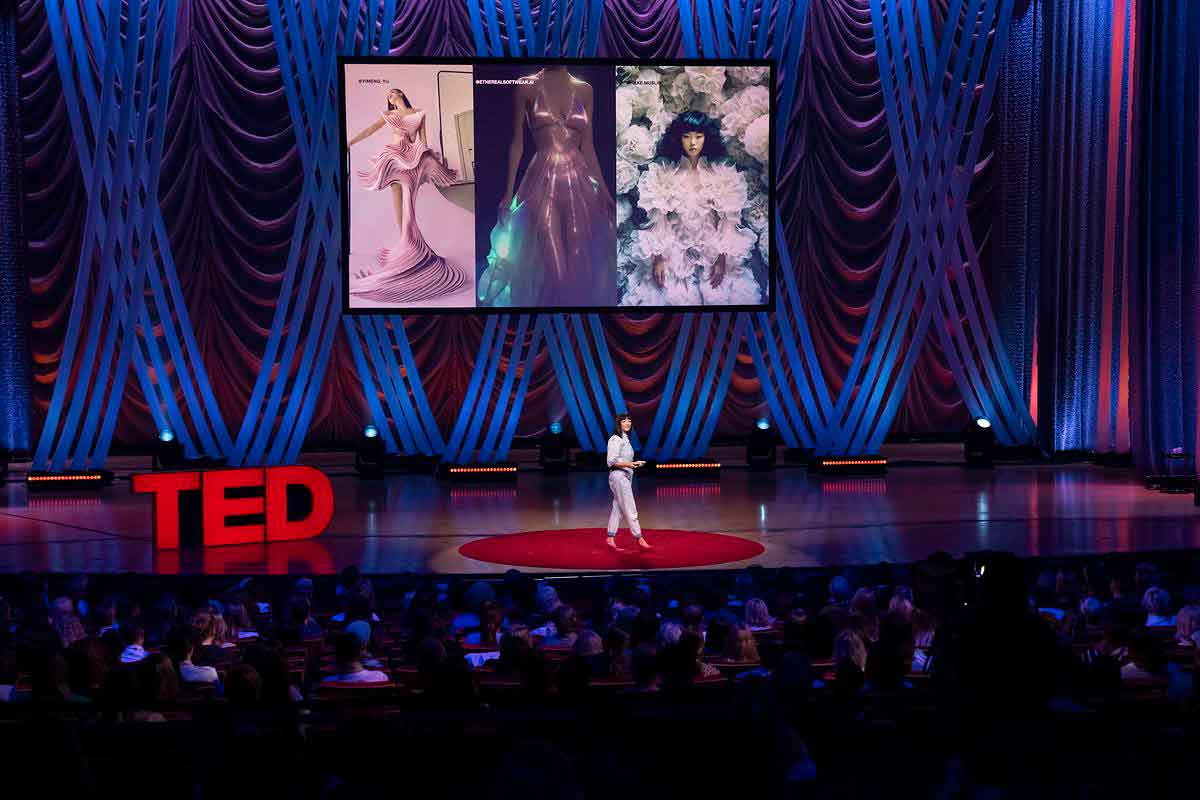Imagine a world where you could pick out an outfit without worrying about the cost of fabric, access to high-quality materials, or even the effects of gravity.
According to The Dematerialized co-founder Karinna Grant, digital clothing will be a realistic possibility in the next decade.
“By 2033, you just might have a smaller wardrobe than you have now … because dematerialization will have taken over fashion,” Grant said at the TEDWomen conference.
The digital couture expert and fashion professor teased the concept of a future where the lines between digital and physical clothing are blurred for the better.
“When you design virtually, you have limitless possibilities,” Grant said in her Talk.
Digital fashion could reduce the harmful consequences of fast fashion.
A move toward digital fashion could be the answer to clothing overproduction and the harmful cycle of fast fashion.
Fast fashion perpetuates unfair labor practices and leads to poor working conditions for garment workers around the world.

Fast fashion also has a negative impact on the environment. There has been a concerning surge of clothing waste over the past half-century, but Grant said that digital fashion could “help reduce the impact of the 92 million tons of clothing that end up in landfills each year.”
“Looking to the future, by 2033 it’s probably likely that you’ll have a Spotify-style subscription to download the latest fashion to wear on your work hologram calls or to flex on your avatar to a virtual gallery opening,” Grant said in her Talk. “Just another couple reasons why that wardrobe of yours might have a lot less in it.”
Digital fashion trends are already being implemented in 2023.
Digital clothing could revolutionize the fashion industry over the next decade, but some businesses are already implementing digital trends today.
“Digital versions of physical products and digital-only products are making their way into our lives through gaming, social media, and shopping,” Grant said in her Talk.

But it’s not just virtual reality skins and Balenciaga outfits on Fortnite. Groundbreaking apps like Save Your Wardrobe are already in place to help consumers cut down on clothing waste in real life.
“Save Your Wardrobe is an amazing tool that digitizes your wardrobe [and] helps you style outfits together and facilitates care and repair, so that your outfits last longer,” Grant said.
Other websites like Style.me and PICTOFiT.com allow consumers to virtually “try on” clothes before they buy them by uploading outfits to their digital avatar.
Grant believes this could eliminate e-commerce return rates, which have soared between 40 and 60 percent.
“E-commerce return rates [have] a real environmental cost,” Grant warned. “How about if retailers helped try things digitally, before we purchase them physically?”
Digital clothing could democratize fashion consumption and creation.
Grant expects digital fashion will completely change the way people buy and create clothing.
“You could update the clothes that you’re wearing with new messages [and] slogans on a daily basis,” Grant said in her Talk.
The rate at which people can change their outfits could also affect the rate at which fashion trends come and go — and who is dictating those trends.
“The types of garments, styles, and the types of creativity we’ll see will be broadened, and also the barriers to entry — whether you’re a creator or a consumer — will be lower,” Grant told Good Good Good.

Grant thinks this democratization of clothing will generate a “bottom-up movement rather than a top-down movement” where individuals and small businesses will be the biggest influencers in the market.
“We’ll be able to see this power shift and power balance, particularly for creatives who can be empowered from a social capital, economic capital perspective,” Grant told Good Good Good. “I think digital fashion breaks down all those barriers.”
Header image courtesy of Jasmina Tomic/TED
